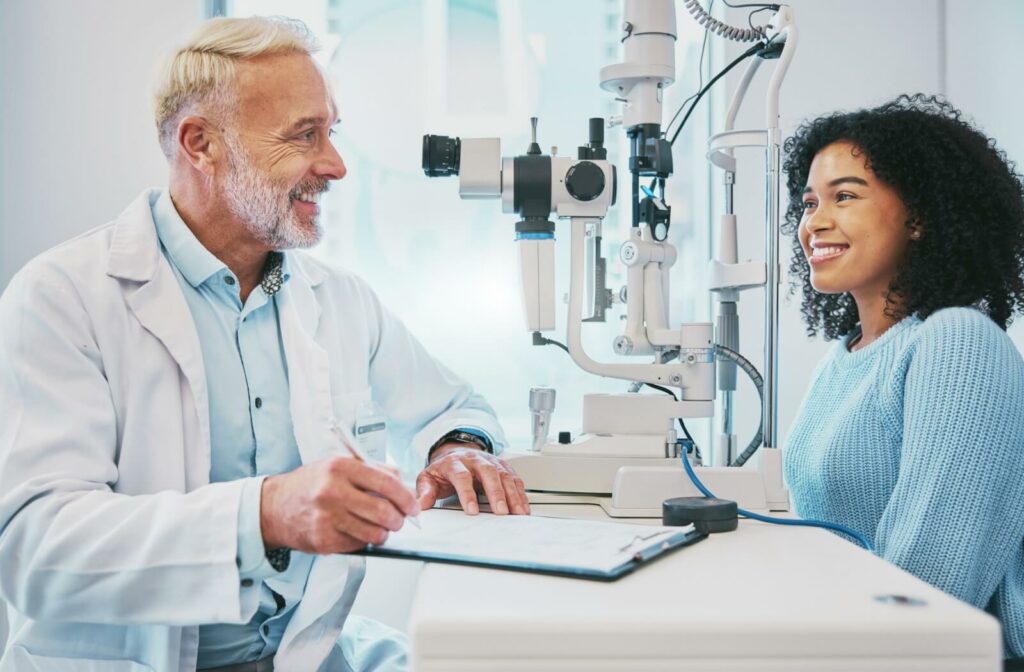All Categories
Featured
Table of Contents

Normal eye assessments are vital for preserving good vision and spotting possible eye health and wellness concerns early. Nonetheless, the regularity of these exams can vary considerably based upon a person's age, way of living, and total health. Understanding the suggested schedule for eye examinations can assist make sure that individuals of all ages receive proper care and tracking for their eye health and wellness.
Infants and Toddlers (0-2 Years)
For babies and toddlers, eye tests are critical for detecting any kind of potential vision issues at an early stage. The American Academy of Ophthalmology advises that a kid's initial eye examination need to occur at around six months of age. During this preliminary browse through, the eye treatment professional will assess the youngster's aesthetic advancement and look for any type of obvious eye concerns.Following this first test, it is advised that children have an additional eye exam at age three. This see will focus on evaluating the kid's general aesthetic function, consisting of eye placement and the capability to track things. If no problems are discovered, the next test should be arranged before the child starts institution, normally around age five or six.
School-Aged Youngsters (6-18 Years)
Regular eye tests need to be set up every one to two years as soon as youngsters reach institution age. Vision is essential for finding out and development, and numerous institutions conduct vision screenings. These testings do not change an extensive eye test by an eye care expert.For kids involved in tasks or sporting activities calling for considerable aesthetic emphasis, yearly eye examinations may be a good idea. In addition, if a kid shows signs of vision troubles-- such as problem checking out, squinting, or constant migraines-- a visit to the eye doctor need to be scheduled asap.
Young Grownups (19-39 Years)
Young person commonly have fewer vision adjustments than older age groups, but normal eye tests stay vital. The basic recommendation is to schedule an eye examination every two years during this duration. Individuals with certain threat variables-- such as a family members history of eye condition, diabetes mellitus, or those that wear contact lenses-- ought to take into consideration annual eye exams.In addition, those that invest considerable time on digital gadgets might experience electronic eye pressure. If signs such as dry skin, exhaustion, or blurred vision occur, it might be wise to see an eye care professional faster.
Adults (40-64 Years)
As individuals get in middle age, the likelihood of creating vision issues increases. Adults aged 40 to 64 need to set up eye examinations each to 2 years. This age might start to experience presbyopia, a natural age-related condition that makes it testing to focus on close things. Eye exams can additionally assist identify other usual age-related conditions such as glaucoma, cataracts, and macular degeneration.If people in this age group have threat elements like high blood pressure or diabetes mellitus, they may need more regular exams to monitor their eye wellness closely.
Elders (65 Years and Older)
For elders, routine eye examinations become also more crucial. The American Optometric Organization suggests that people aged 65 and older have an eye exam at the very least once a year.Verdict.
Recognizing the ideal schedule for eye tests based on age is vital for keeping optimal eye health throughout life. By sticking to these standards and seeking advice from with an eye care specialist, people can take aggressive steps towards preserving their vision and total wellness.Table of Contents
Latest Posts
Enjoy Fresh Seafood and Exquisite Menus at Deauville Inn’s Dining Room
Published May 19, 25
2 min read
Savor Fresh Seafood and Seasonal Menus at Deauville Inn’s Dining Room
Published May 17, 25
2 min read
Appreciate the Flavors of Yesterday's Tavern
Published May 14, 25
1 min read
More
Latest Posts
Enjoy Fresh Seafood and Exquisite Menus at Deauville Inn’s Dining Room
Published May 19, 25
2 min read
Savor Fresh Seafood and Seasonal Menus at Deauville Inn’s Dining Room
Published May 17, 25
2 min read
Appreciate the Flavors of Yesterday's Tavern
Published May 14, 25
1 min read